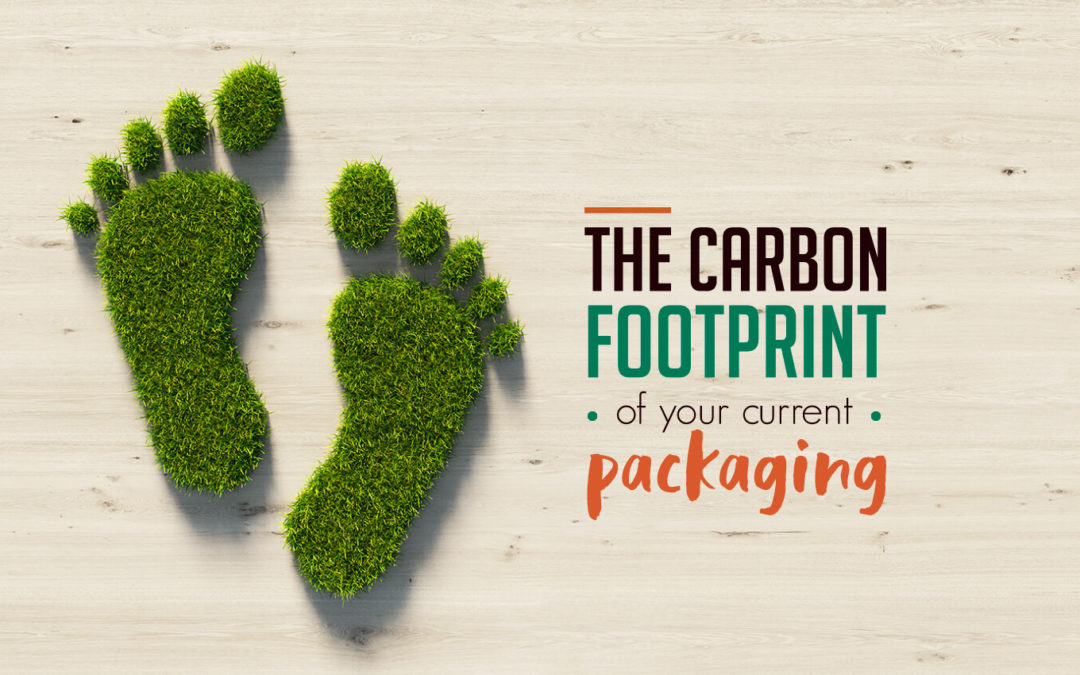“I’m passionate about caring for this planet. I’d like to bring awareness to ways that individuals can reduce their carbon footprints without waiting for governments to change things on a policy level.”
- Laura Regan, Canadian actress.
There is a huge debate going on about the waste generated by e-commerce vs. traditional retail. Studies abound, making great cases for both sides, and in the end most of them finish up with a big “it depends”. However, there’s no denying the fact that efforts have to be made, and are being made, into developing greener, more eco-friendly and sustainable packaging solutions. So let’s take a brief look at your packaging’s carbon footprint and environmental impact, and how you as a consumer and business owner can help.
Your Footprint. Our Footprint.

Living a normal modern life is enough to contribute to the global carbon footprint, everyone has a carbon footprint. This is not a reason to give up or just go along with your life, it’s actually a challenge for every individual and every household, as well as every business, to try to positively contribute to the reduction of our overall carbon footprint. According to the Product Policy Institute, 44% of the U.S. greenhouse gas emissions come from products and packaging; and the value of wasted packaging materials in the U.S. is $11,402,020,357 per year. The challenge is great, but our resolve must be greater. You can easily calculate your carbon footprint using one of the many calculators available online. Some of the most useful include the ones developed by the Global Footprint Network and the U.S. Environmental Protection Agency. Use them to calculate yours and find ways to reduce your footprint.
The Opportunity
In 2017, global e-retail sales grew 24.8% compared to the previous year, and this trend is expected to continue. One of the many challenges the industry has to face is the growing demand for sustainable packaging that is efficient, safe and appealing. This raises an opportunity for innovative and conscious developments that fit the demand and are better designed to reduce impact on the environment. Only collaboration among all players and transparency will create solutions that are true opportunities to invest in further development of the packaging supply chain.
Who Needs to Worry About It?
One of the biggest questions is if e-commerce packaging is a worry for brand owners, fulfillment houses, or distributors. However, according to Bob Lilienfeld, Ameripen’s senior communications director, all three players share this responsibility. “Consumers don’t necessarily differentiate between the retailer or the brand. We know consumers believe that packaging is reflective of company’s sustainability commitment, so brands and retailers both need to ensure their packaging demonstrates this commitment.”
Big Picture Thinking
One of the major challenges of e-commerce packaging is the inability of the industry to see the many factors affecting it. There seems to be a lack of commitment to look at the economic, environmental and social impact of both the product and the packaging, including the primary, cushioning and transportation components. Another important component to take into account is not only the amount of packaging material that is being used, but also its disposal, especially since e-commerce leaves the disposal part of the process in the consumer’s hands.
What can Brands do?
As a brand or retailer, one of the most important actions to take is encouraging customers to order products in a “basket”. This means trying to bundle-up as many products as possible in one single order. Of course this means a more expensive order for the customer, however, applying discounts or promotions is a way to encourage this behavior and will save you shipping and packaging costs, on top of helping you move more inventory. Another important aspect to consider is the actual packaging itself. Selecting materials that are eco-friendly and sustainable doesn’t mean you have to sacrifice branding or image, on the contrary, adhering to these principles adds value to your brand. Finally, use your connection to your customers to educate them on how to properly dispose of your products’ packaging, give them the information and tools they need; this will increase their trust, love, and loyalty to your brand.
What can the Consumer do?
We’re all consumers. So, it’s important to also consider this point of view, not only to understand this perspective, but to also contribute from this perspective. There are many ways conscious consumers are able to help reduce the environmental impact of the products we consume. For instance, if the retailer offers the option of picking up an order from a close-by location that is accessible by foot, bike, or public transportation, consider doing so. It’s better for you and for the environment. Also, as stated above, try bundle-up items in one single order to save on packaging materials and costs. Finally, prefer brands that share your concern for the environment, research the type of packaging and shipping methods they use and familiarize yourself on how to properly dispose of the packaging materials after your product has arrived.


